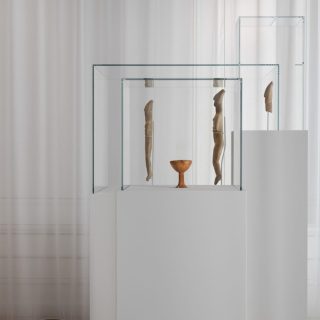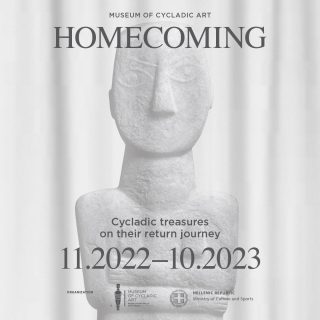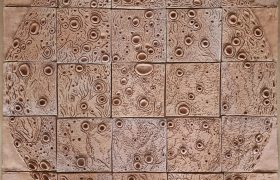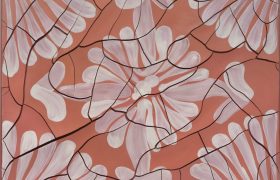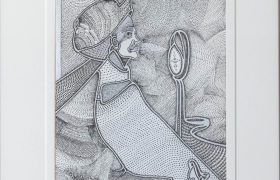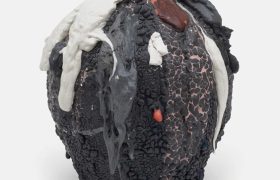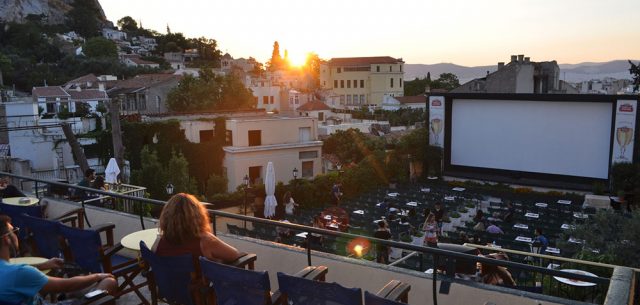Homecoming (or not?) at the Cycladic Museum of Art
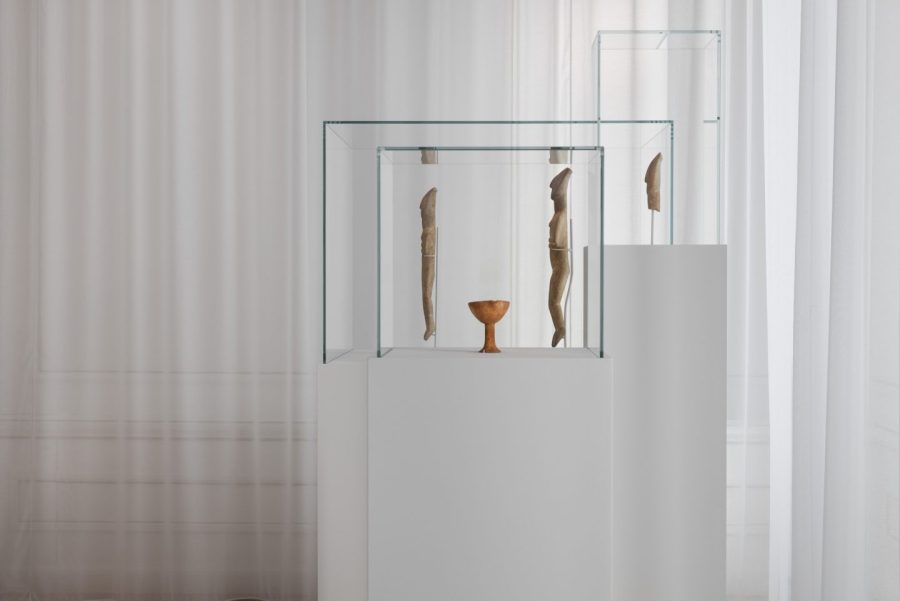
Cycladic culture thrived from ca. 3200-2000 BCE in the core islands of Greece’s Aegean Sea. It is enigmatic and archaeologically complex – leaving behind thousands of miniature marble objects from graves, but no written records or large-scale building to help understand their meaning. This exhibition celebrates the ‘Homecoming’ of a private collection of these objects that might not be so lasting or imminent as we first believe, Gabriel Coleman argues.
From November 2022 to October 2023, 15 Cycladic artefacts are on display in the grand Neoclassical Strathatos Villa wing of the Goulandris- Cycladic Museum. Set against dramatic (and slightly clinical) white drapery, the exhibition supposedly celebrates the ‘Homecoming’ of a collection of objects that have been in the private collection of a New York businessman and collector- Leonard Stern- since the 1980s.
The exhibition is the first step in a historic deal involving 161 of Stern’s figurines and vases which has been made between the Greek state, the Stern family, the Metropolitan Museum and the Cycladic Museum. Over the course of the next 50 years, the objects will be moved first to the Met (by 2024), then be part of a series of exchanges of objects between the Cycladic Museum and the Met, then finally (by 2070) settle in Greece. Their ‘Homecoming’ then is not quite so lasting or imminent as we might first believe!
Cycladic culture thrived from ca. 3200-2000 BCE in the core islands of Greece’s Aegean Sea. It is enigmatic and archaeologically complex- leaving behind thousands of miniature marble objects from graves, but no written records or large-scale building to help understand their meaning. These objects were overlooked by academics and collectors alike until the early twentieth century, when the fascination of modernists- such as Henry Moore, Picasso, Giacometti and Modigliani- sparked a popularity for Cycladic culture.
They have since become recognizable symbols of Greece: reproduced in the trinkets of any tourist shop, snapped in guidebooks and even turned into huge space ship like apparitions in the epic 2004 opening ceremony for the Athens Olympics. On a more sinister note, though, international demand for Cycladic figurines has fuelled widespread looting, illicit excavation and an industry of fakes and forgeries (surprisingly easy to pull off until the authorities recently caught up with it). The export of these figurines into most public or private collections outside of Greece has more often than not been tarnished by this.
Part of Stern’s collection have already been connected to illegal dealers in a 2005 publication issued by the very institution that now celebrates him: the Cycladic Museum. The fact that the Greek state would allow this deal- which benefits Stern (allowing him to launder his controversial collection), the Metropolitan Museum (already the subject of six DA raids for illegal antiquities in 2022 alone) and the privately owned Cycladic Museum in Athens (rather than a state Museum or one in the Cyclades itself), has understandably left many Greek and international critics dumbfounded and upset.
In a recent New York Post article, a prominent antiquities trafficking researcher, Christos Tsiorgiannis, bluntly states: ‘This is not repatriation. It is benefitting institutions that have no right to be involved at all. The biggest scandal is that this is being accepted by the Greek State.’
The glorious ‘Homecoming’ of Cycladic art? Or the whitewashing of the shady history of private collectors and major museums? Whichever way you see it the current exhibition at the Goulandris-Cycladic Museum is a vital part of the continuing debates of the complex meanings of repatriation and ownership- might it even be a step closer to the return of the most coveted Greek marbles of all? Only time will tell!
Homecoming is on at The Cycladic Museum of Art, Neofytou Douka 4 until October 2023. cycladic.gr

